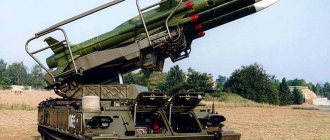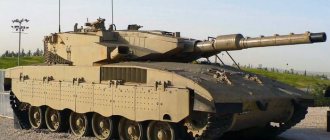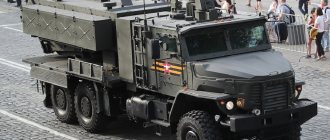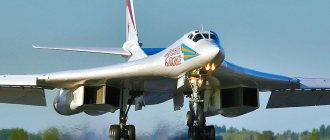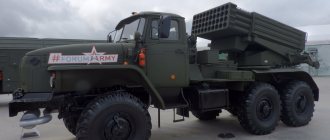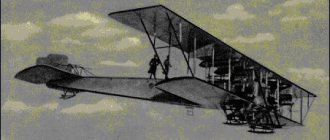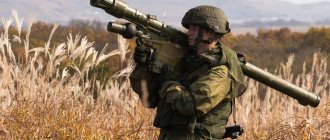S-300P
The original S-300P variant was highly specialized and hardly superior to the S-200 system. However, the wide scope for modernization has made it possible to develop several variants of air defense systems, some of which appeared relatively recently. The evolution of the system and the versatility of its design are unparalleled.
Studying the history of the S-300 provides insight into the transformation of the air defense potential of Russia and a number of its allies, writes Military Watch Magazine.
Today, there are three main “families” of S-300 - S-300P, S-300V and S-300F.
The first S-300P could not boast of a record range, but they were radically different from other anti-aircraft missile systems in the vertical launch of missiles, which allows the air defense system to attack enemy targets while in the forest or in dense buildings, which makes it difficult to detect. Later, the same concept was followed by the creators of other air defense systems, such as Patriot, KN-06 and HQ-9. The S-300 was also distinguished by the ability to attack several targets simultaneously using a single fire control system.
Still, the capabilities of the S-300P were limited; the system’s range was especially modest—up to 70 kilometers. Another problem was not the best mobility indicators - deployment time was at least an hour.
The system was capable of hitting cruise missiles and aircraft. It replaced the S-25 surface-to-air missiles, which entered service back in 1955.
The successor to the S-300P, designated S-300PM/PS, entered service in 1985. The use of a more advanced chassis made it possible to significantly increase the mobility of the complex and, as a result, its survivability. The new missile made it possible to increase the range of the anti-aircraft system and the accuracy of the hit.
Characteristics and prospects
A long range of destruction, a wide range of altitudes and speeds, the ability to simultaneously target 12 targets - this is a short list of the advantages that the S-300 has. The missile system, whose characteristics exceed those of all foreign analogues, can shoot down aircraft, cruise and ballistic missiles at distances from 5 to 150 km. It does not matter at what altitude the target flies, 10 meters or 27 kilometers. The speed of the object is also not a big problem; it can be hypersonic 2800 m/s (that is, over 10,000 km/h). Thus, the S-300 missile system was created taking into account the long-term prospects for the development of offensive weapons and will be able to serve as a deterrent foreign policy factor for a long time. The modification potential of the system allows it to be constantly improved both in hardware and information aspects.
S-300PM and S-400
The S-300PM1 entered service in 1992. The system made a real revolution - for the first time in the world it could simultaneously use missiles of different types. These included 48N6E missiles with a range of up to 195 kilometers and a warhead weighing 150 kilograms. The missile's speed, exceeding Mach 5.8, made it possible to intercept supersonic missiles and significantly reduce aircraft evasion capabilities. Later, the 9M96E1 and 9M96E2 missiles appeared, the range of which is 40 and 120 kilometers, respectively. The use of these missiles has turned the C-300PM1 into a universal system capable of effectively hitting targets at short and medium ranges. Despite their smaller warhead, the 9M96E1 and 9M96E2 are more likely to be killed than their predecessors. This was achieved due to the fact that for maneuvering they use not an aerodynamic tail, but a gas-dynamic system. Another advantage of the C-300PM1 is the new 30N6E illumination and guidance radar, which allows you to simultaneously fire at up to 6 targets.
The S-300PM2 anti-aircraft missile system was put into service in 1997. The maximum target detection and engagement range has been increased. This was the first version of the S-300 capable of combating medium-range tactical ballistic missiles. In addition, individual units were able to operate autonomously thanks to the 96L6E self-propelled all-altitude radar.
The S-300PM2 was an important step towards the development of the S-300PM3 air defense system, later renamed the S-400. It has become one of the best air defense systems of the 21st century. The Triumph, which entered service in 2007, can use 40N6 (range up to 400 kilometers), 48N6 (up to 250 km), 9M96E2 (up to 120 km) and 9M96E1 (up to 40 km) missiles. Due to this, the S-400 is capable of independently providing layered air defense. Foreign counterparts, such as Patriot and THAAD, not only have a shorter range, but also cannot fire at as many targets simultaneously.
In Russian air defense systems, the missile is launched using a special ejection device directly from the transport and launch container. The rocket is thrown vertically upward to a height of 30-50 meters, after which the starting engine is started and tilted towards the target. This complex launch scheme makes it possible to increase the maximum range of missiles while reducing the minimum range of their use.
One of the main features of the S-400 was the use of the 40N6 missile, capable of hitting targets at a distance of up to 400 kilometers. Its homing head is capable of finding a target after losing contact with ground systems. This missile could change the balance of power in several regions of the world. For example, it allows the PRC to control the airspace of Taiwan. Fighters, AWACS aircraft, tanker aircraft and airborne command posts are very vulnerable to the 40N6. Further proof of this was the US refusal to use Boeing E-8 Joint STARS aircraft.
Another distinctive feature of the S-400 is its ability to detect and track stealth aircraft. The powerful 91N6E early warning radar can “capture” them at a distance of over 150 kilometers. The combination of range, speed and accuracy makes the Triumph a major threat to enemy aircraft and missiles.
The most important stage in the development of domestic air defense systems began with the adoption of Resolution No. 394-138 of May 25, 1969, by which the party and government ordered the creation of unified S-300 anti-aircraft missile systems for the three branches of the Armed Forces. The ground forces had recently adopted the Krug air defense system, which was quite modern for that time, and did not feel an urgent need for new anti-aircraft weapons. On the other hand, taking into account the plans of a limited nuclear war constantly proclaimed by the West, the task of creating a military anti-missile system, even with moderate capabilities in terms of the speed of intercepting targets, seemed quite urgent. Subsequently, such complexes received the names “non-strategic missile defense system” or “theater missile defense system.” In this regard, at a fairly early stage of development, the military version of the promising air defense system (S-300V) actually ceased to be unified with other complexes of the S-300 family.
On the contrary, the country's Air Defense Forces and the Navy needed the speedy creation of a modern means of combating aerodynamic targets (airplanes and cruise missiles) to replace what was conceived back in the early 1950s. complex S-75 and did not link this task with missile defense. At that time, none of the known ballistic missiles posed a threat to ships at sea. The warheads of missiles aimed at targets deep within the territory of the USSR flew so fast that to intercept them required complex and bulky strategic missile defense systems, the unification of which with anti-aircraft air defense systems seemed impractical.
Based on the commonality of tasks, it was possible to achieve a high degree of unification of the ground-based S-300P air defense system and the ship-based S-300F - complete in terms of missiles and partially in terms of radio-electronic equipment. In particular, the designers of the main developer of the S-300F air defense system - VNII RE (later - NPO Altair), led by chief designer V.A. Bukatov and his deputy B.M. Palladin, used in shipborne equipment receivers and transmitters of radar illumination and missile guidance, created at the Strela IKB (later on - NPO Almaz) under the leadership of B.M. Bunkin for the S-300P Air Defense Forces complex. The basic composition of electronic computing tools has also become unified.
At the same time, taking into account the ship's pitching, the peculiarities of the reflection of radar beams from the water surface, and the influence of an unfavorable water environment, the antenna posts had to be developed anew. This was reflected in their appearance. In the ground complex, rectangular flat phased antenna arrays in the transport position were laid horizontally on the roofs of the corresponding cabins of the complex.
In the ship version, the antenna arrays were hidden inside radio-transparent fairings similar to bicycle headlights. The frame of the reflective phased array antenna was made of polyurethane foam edged with an aluminum ring. Below the main antenna, intended for tracking targets and guiding missiles, there was a phased array missile capture antenna, and on the upper part of the antenna container there were three radiation compensation antennas along the side lobes of the radiation pattern. Inside the container there were transmitters, receivers and other equipment of the station. The container with the antenna could be rotated along the heading angle by ±175°, and the scanning of the beam along two axes relative to the plane of the antenna was carried out electronically.
It should be noted that the requirements from the ship complex significantly influenced the choice of the launch scheme and aerodynamic configuration of the rocket. Vertical launch from the space below deck made it possible to do without the traditional rotary pedestal launchers with beam guides, ensuring high security of the ammunition load and an almost unlimited rate of missile launch. At the same time, the sailors were not satisfied with the scheme of launching missiles under the influence of the thrust of their own engine, which in principle is acceptable for the Air Defense Forces. A possible engine explosion at the time of launch in a closed space below deck could well lead to the death of a ship with hundreds of sailors on board, not only in wartime, but also in peacetime.
The “mortar” launch scheme using a powder pressure accumulator that inflates the sub-missile space in the transport and launch container in which the rocket is located was also not entirely suitable. At the moment the container is uncorked, shock waves are formed when the missile exits it, capable of destroying many antennas and other above-deck devices of the ship. In addition, there is a problem with catching the pallet and other elements that threaten to fall onto the deck, ensuring the coaxial movement of the rocket in the container and sealing the confined space behind its tail compartment.
The air defense troops found another argument against this launch scheme - a bright stream of burning gases flowing from the container would unmask the location of the complex’s positions. As a result, after the start of flight tests, the developers switched to an ejection design. The combustion products of the gas generator entered long cylinders with pistons moving along them, which were connected to the rocket.
It can be assumed that the initial aerodynamic design of the missile, designed at the Fakel Design Bureau under the leadership of P.D. Grushin, was chosen not without the influence of the appearance of the American ship-borne anti-aircraft missiles Tartar and Standard. However, the similarity of the layouts of Soviet and American missiles was determined not by imitation, but by the commonality of requirements. In order to ensure a sufficient area of the wings with their minimum span, wings of extremely low aspect ratio were used - “pylons”, or, as they were also called, “ribs”.
Among the Soviet rocket models tested in wind tunnels, along with Tartar-like versions with four wing “pylons,” there was also a layout with eight “ribs.”
Research has shown that for flight conditions typical of S-300 missiles, the contribution of the wings to the formation of lift is insignificant. As a result, a layout reminiscent of a ballistic missile was adopted - without wings at all, with aerodynamic rudders located on the tail section. But it was the unrealized initial layout that determined the choice of technology for forming the metal body of the rocket - the deep drawing method, which makes it possible to form wings-"pylons" simultaneously with the cylindrical surface.
The single-stage design of the rocket also met the requirements of the ship's complex, eliminating the possibility of the accelerator falling onto a neighboring ship. The scheme for operating the rocket in a transport and launch container also met the cherished aspirations of the sailors, ensuring the specified reliability throughout the entire warranty period of operation without carrying out frequent routine checks. This problem in the navy was even more acute than in the country’s Air Defense Forces, since the implementation of regulations in ship conditions required the provision of significant volumes to accommodate the corresponding equipment, and shore inspections entailed a decrease in the ship’s combat readiness and additional labor-intensive loading and unloading, fraught with damage only mechanical damage to the missiles, but also more serious troubles.
Below-deck missile launchers were developed by Leningrad designers in relation to two options: first B-203A for the nuclear cruiser Project 1144, and then B-204 for the missile cruiser Project 1164 with a gas turbine power plant. Both options involved placing containers with missiles in vertical below-deck drums. As they rotated, the TPK with the rocket was fed under the deck hatch that opened upward, through which the rocket was launched. The designers chose this scheme in comparison with the simpler option of installing containers with missiles in stationary below-deck cells, providing a more dense placement of weapons, based on the desire to provide greater strength and rigidity of the upper deck with a minimum number of hatches, which made it possible to effectively include it in the overall power structure of the ship and increase the protection of the missile magazine from weapons of destruction.
The adopted below-deck layout, taking into account the high launch altitude of the rocket engine with a vertical launch (20-25 m), made it possible to fire in any direction. The firing zones were limited only by the obscuring of the radar illumination and missile guidance by masts and superstructures. With two radars, a circular firing zone was provided, while all launchers could be placed in one zone along the length of the ship's hull.
As one would expect, the development of a complex for the Air Defense Forces, which was a higher priority for the country’s defense capability, was ahead of similar work on the ship version. Flight tests of the rocket began on March 17, 1972. The main problems with the rocket and standardized hardware elements were resolved at the Sary-Shagan test site during testing of the S-300P.
To test the S-300F in real sea conditions, a test ship was required. The anti-aircraft missile system was to be tested in interaction with the information means that ensure its operation - first of all, with radars for detecting air targets. Modern examples of this technology were already available on new warships. It was necessary to take care of the further fate of the prototype of the complex upon completion of the tests, ensuring its subsequent operation on a full-fledged combat unit, and not on a highly specialized and almost uncombat-ready “floating stand”.
In 1977, at the Sevmorzavod in Sevastopol, the large anti-submarine ship Azov, built by the Nikolaev Plant named after. 61 Communards" (building number 1206) and entered into service in the fleet in 1975. Unlike other ships of Project 1134B, "Azov" was initially equipped only with the bow M-11 "Storm" air defense system. During the conversion, prototypes of the B-203 launcher (four drums for 32 missiles) and an illumination and guidance radar were placed at the aft end on pre-prepared foundations. To lighten the ship, the five-tube torpedo tubes were replaced with two-tube ones.
Tests of the S-300F at Azov were carried out in 1978-1979, i.e. at a time when the S-300P complex of the country’s Air Defense Forces was already officially being put into service. By the end of 1980, the leading testers moved from the Black Sea to the Barents Sea. Designed at the Northern Design Bureau (chief designer - B.I. Kupensky) and built at the Baltic Plant in Leningrad, the heavy nuclear cruiser Project 1144 "Kirov" - the lead carrier ship of the S-300F complex (building number 800) - moved from Kronstadt to Severomorsk to complete state tests.
The ship carried two ZR-41 radars of the Fort complex on the bow and stern superstructures. The total ammunition load with 96 missiles was located in B-203A launchers located in the bow of the ship. By the end of the next five-year period in 1980, the State Commission signed an acceptance certificate for the first-born of the domestic surface nuclear shipbuilding industry. However, a number of issues remained unresolved, in particular those related to the main anti-aircraft missile system. Testing continued for several more years both on Azov and Kirov. In 1983, the lead ship of Project 1164 “Slava” came to the North, designed at the Northern Design Bureau (chief designer - A.K. Perkov, then V.I. Mutikhin), built at the Nikolaev Plant named after. 61 communards" (building number 1208). Unlike the Kirov, it carried one Fort complex and 64 missiles at the rear of the ship in the B-204 launcher.
During tests on October 26, 1983, “Kirov” and “Slava” successfully repelled an attack by 14 air targets, shooting down all 13 targets that entered the affected area. Tests confirmed the possibility of hitting targets at altitudes from 25 to 25,000 m at a distance of up to 90 km. Officially, the S-300F complex with the 5V55RM missile was put into service only in 1984.
At this time, the development of improved 48N6 missiles with a range increased by approximately 1.5 times was already underway. It seemed advisable to further increase the range to hit targets such as radar patrol aircraft and jammers. The ranges already achieved were somewhat excessive when firing at mass targets - fighter-bombers and attack aircraft, attacking ships, as a rule, at extremely low altitudes. But even when solving this combat mission, the S-300F complex had significant advantages over other ship-based air defense systems due to the high average flight speed of the missile and equipping it with a powerful warhead.
The most important advantage of the S-300F complex was its multi-channel capability, which allowed the simultaneous guidance of 12 missiles at six targets, and the launchers ensured the launch of missiles with an interval of 3-5 s.
Following the Kirov (renamed Admiral Ushakov in 1992) in 1984-1998. Three heavy nuclear-powered missile cruisers of the Leningrad-built improved project 11442 (chief designer - B.I. Kupensky, then V.A. Perevalov) entered service: "Frunze" (hereinafter - "Admiral Lazarev", construction number 801), " Kalinin" ("Admiral Nakhimov", No. 802) and "Peter the Great" (No. 803).
After “Slava” (since 1995 the ship was renamed “Moskva”) in Nikolaev on Project 1164, two cruisers of the same type (building numbers 1209 and 1210) with gas turbine units were built - “Chervona Ukraine” (since 1994 - “Varyag” ) and "Marshal Ustinov". Not counting the prototype of the complex installed on the Azov, the fleet was supplied with eleven missile illumination and guidance radars, as well as seven launchers, the 72 drum devices of which housed a total of 576 missiles.
Alas, the long-awaited wonderful weapon - the S-300F complex - entered the fleet too late. As the country's financial and economic situation worsened (world oil prices were rapidly falling), military shipbuilding programs were curtailed. This was primarily manifested in the cessation of construction of the largest surface ships, for which the S-300F air defense system was intended. The fifth nuclear-powered (“Admiral of the Fleet of the Soviet Union Kuznetsov”) and three gas turbine (“Admiral of the Fleet Lobov”, “Russia”, “Admiral of the Fleet of the Soviet Union Gorshkov”) cruisers were never built. Moreover, unskilled operation ruined the most powerful ships already built. Of the four nuclear-powered cruisers Projects 1144 and 11442, only “Peter the Great” remained in service (when laid down - “Yuri Andropov”). All three gas turbine cruisers of Project 1164 are part of the fleet, but the very mode of their operation with extremely rare, due to financial circumstances, trips to sea provokes the gradual degradation of the ship.
Nevertheless, the S-300F air defense system continued to improve. On the last of the ships built, it was possible to use new 48N6 missiles instead of the originally specified 5B55. On the Peter the Great, a new antenna post of the ZR-48 control system is mounted in the bow, and the ship also uses more advanced computing facilities. As a result, the maximum target engagement range increased from 70 to 120 km.
Unfortunately, the most powerful naval air defense system was distinguished by its large weight and dimensions, effectively limiting the type of ships suitable for its deployment to cruisers with a displacement of over 10,000 tons, which far exceeds the corresponding figure for any of the ships laid down for the domestic fleet after 1990.
And yet, the S-300FM air defense system has certain prospects. The export modification of the Rif-M complex entered service with two Chinese destroyers of the Shenyang type, Project 051C, built in 2006-2007. In addition, a local modification of the S-300 type complex - HQ-9 - was installed somewhat earlier on two Lanzhou-class destroyers, Project 052C.
In conclusion, we note that it was in the S-300F that the vertical launch of anti-aircraft missiles was practically implemented for the first time in the world. In addition, this complex became the first domestic multi-channel air defense system.
Photos by D. Pichugin were used, from the archives of R. Angelsky and the US Navy.
Based on materials from the magazine “Equipment and Weapons No. 3 2014”
Read also:
M-11 "Storm"
M-22 "Hurricane"
SAM M-2 "Volkhov"
Shipborne air defense systems
SAM M-1 "Volna"
SAM "Dagger"
We also read:
- Military air defense systems and complexes in service with the leading armies of the world. Part 3
- Military air defense systems and complexes in service with the leading armies of the world. Part 1
- C-500 "Prometheus". Creating new weapons
- "Tor-M2KM" - modular air defense system
- Military air defense systems and complexes in service with the leading armies of the world. Part 2
- The S-75 air defense system is the first among equals. Part 4
- The S-75 air defense system is the first among equals. Part 3
- The S-75 air defense system is the first among equals. Part 2
- The S-75 air defense system is the first among equals. Part 1
- Development and role of air defense systems in the air defense system. Part 2
- Precision engineering booms. MANPADS "Strela"
- SAM "Dagger"
- SAM M-1 "Volna"
- SAM M-11 "Storm"
- SAM M-22 "Hurricane"
- SAM M-2 "Volkhov"
- Anti-aircraft missile system "Strela-10"
- Anti-aircraft missile system S-200 "Vega"
✏ Leave a comment
Categories: S-300F “Fort” air defense system. Author admin ✏ No comments »
S-300F "Fort"
Launch silos S300F on the cruiser "Marshal Ustinov". Photo: US Navy / wikipedia.org
S-300F “Fort” is the least known system from the S-300 family to the general public. The naval version of the air defense system was developed to protect USSR Navy ships from air and missile attacks. Far from Soviet shores, the American fleet could ensure air superiority, so the creation of a powerful ship-based anti-aircraft missile system was of fundamental importance for the USSR Navy. The S-300F entered service in 1984. One of the main achievements of the new system compared to the S-300P was the use of 5V55R missiles, which increased the range of destruction of the air defense system to 90 kilometers.
An updated version of this system, designated S-300FM, entered service in 1990. It was this modification of the “Fort” that first used the 48N6 missile, unified with the S-300PM land complex. This missile is capable of delivering a warhead weighing 150 kilograms to a target located at a distance of up to 150 kilometers. The S-300FM remains in service today.
Russia plans to significantly expand the composition of its Navy in the coming years. There is a high probability that the construction of new ships will become an incentive to create a new version of the S-300F, taking into account developments on the S-500, S-400 and S-300V4.
New rocket
The S-300 missile system of the PM modification was adopted by the Russian Army in 1993. Over the past decade, designers have managed to significantly improve the operational and tactical-technical qualities of the system. First of all, this concerns the new 48N6 rocket, designed at Fakel. You should also pay attention to a fundamentally different, more advanced algorithm for solving mathematical problems, built on a modern computing base. The single-stage solid-propellant missile defense system is equipped with a radio direction finder and is launched ejection-vertically, after which it rushes towards the target. At the moment, there are no air assets in service with the armies of potential adversaries that the S-300 missile system could not destroy. The flight range of the 48N6 depends on the type of moving target - it shoots down ballistic missiles at a distance of 40 km, low-flying targets (10-100 m) at a distance of 28 to 38 km, and conventional aircraft fall into the affected area within a radius of 150 km.
The high-explosive fragmentation charge has a mass of 145 kg. The equipment is concentrated in a monoblock and is protected from interference. The length of the 48N6E rocket is 7.5 m, diameter 52 cm, total weight 1.8 tons (in container 2.6 tons). It can be used in mobile or ship-based complexes (“Reef”).


